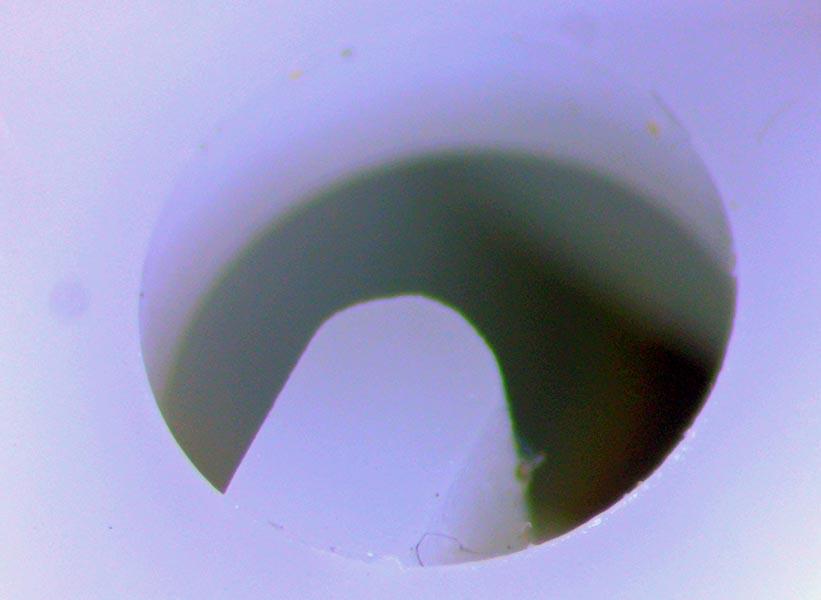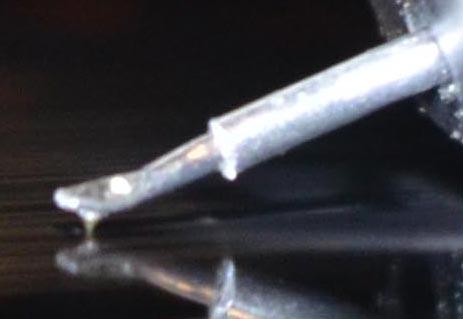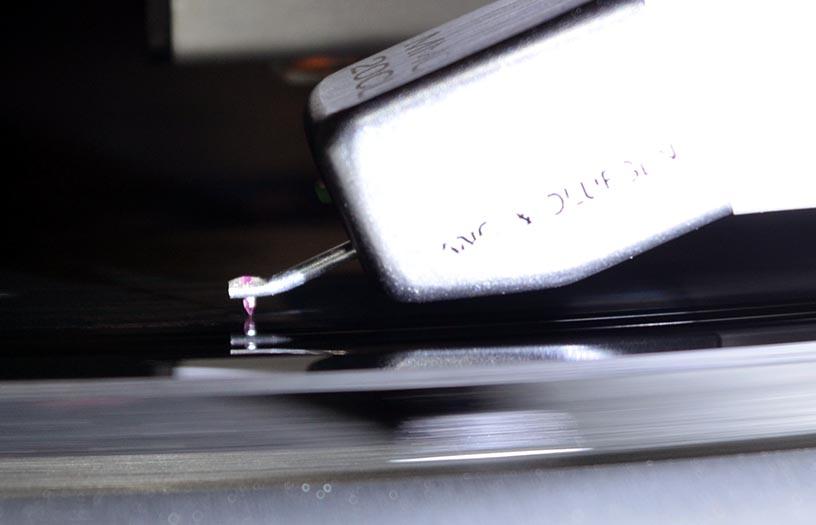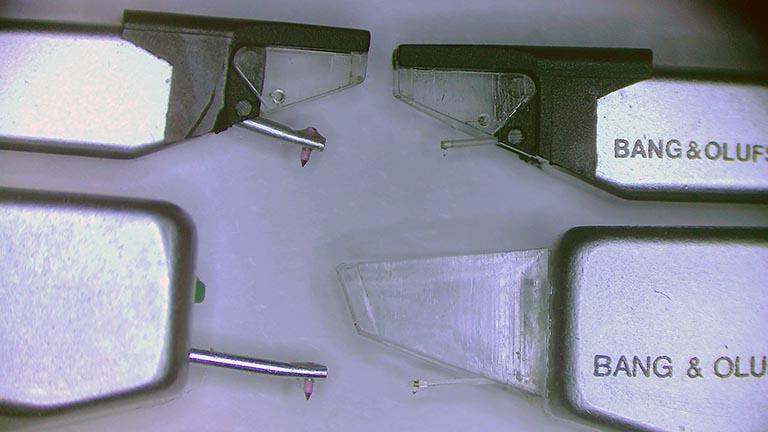Forum Replies Created
- AuthorPosts
-
and no – you currently can’t have two Theatres playing in sync in a multichannel (i.e. one-room) system.
That’s disappointing. I was looking forward to the “Beosound Theatre Innovative Configurations” thread (i.e. the Theatre version of the “BeoLink Converter 1611 Innovative Configurations” thread) 😉
Glitch
Ralph,
Looks good and like it was meant to be there.
BTW, I saw in another thread the suggestion to use a small bolt and nut to create an attachment point. This would be an easier way to do the same thing.
Is there enough adjustment to be able to set the “needle down” position correctly?
Does your sliding chassis park without any chatter?
Glitch
Actually, my question was more like towing one car behind another ;-).

Something like this but with Theatres 😉
The towing situation is possible for some car combinations, but not for others.
Glitch
How about a “pair” of Theatres?
I know that this isn’t practical, but I’m curious if the software could handle this. (Hopefully this question isn’t too off-topic)
Glitch
My best guess is that it that the post is glued on, breaks off easily, and gets lost. I wonder if B&O originally designed something that fit into the hole but changed their minds?
Please post pictures of whatever you make to fix the problem.
Glitch
Ralph,
Yes, it definitely looks like you are missing the post where the spring and string connect to the sliding chassis. It initially looks like the post is molded as part of the sliding chassis frame, but on a closer look I’m not so sure. Here is a picture from the bottom of the sliding chassis.

There appears to be a seam there. This is a strange design choice.
I suspect that you will have a hard time finding just the post. You may have to buy the whole sliding chassis frame. Alternatively, you could make a new custom post that fits into the existing hole. Maybe something like a piece of threaded rod that screws into the hole with part of the rod shaped to form a new post?
I still have not fixed the chattering issue. I moved on to other projects hoping that someone already knew the solution and was willing to share.
Glitch
I got my BL4000’s running. They had multiple issues including a bad standby transformer, fried relay, and foam rot corrosion. The corrosion not only dissolved some of the traces but also broke some of the connections between the SMD lead and the SMD component body. It was a challenging debug for all of the wrong reasons. 😉
I have a solution for the standby transformer that uses readily available parts. However, there are some (possibly safety related) caveats associated with it. Send me a PM if you are interested in the details.
Glitch
The latest (and last for now) Franken-MMC (FMMC) experiment. The donor cantilever is aluminum with a conical, bonded diamond stylus.


My cursory evaluation of the cartridge performance on a 1 to 20 scale, where 1 through 5 map to B&O’s MMC1 through MMC5, respectively, and 20 is something put together from sewing needles and twigs…
The FMMC with the $2 pink ceramic stylus is about a 17. The grafting is relatively easy to do, but the playback is muddy and suffers from distortion on some recordings.
The FMMC with the conical, bonded diamond stylus is about a 12. The playback distortion exhibited by the pink ceramic FMMCs is gone. In general, the highs and lows are there, but the fine detail is not. It sounds like a tired, inexpensive cartridge. This isn’t surprising since it actually IS a tired, inexpensive cartridge.
My overall conclusion is that this type of DIY grafting isn’t very practical. There is a learning curve where one will certainly destroy some donor cantilevers and/or target cartridges. The overall performance could certainly be improved upon by buying a higher quality donor cantilever/stylus. However, the risk/reward ratio just isn’t there. Botching just one reasonably nice donor cantilever and having to replace it puts the overall price in the ballpark of a new SMMC4 (that has a fresh suspension).
My future plans are to use the grafted cantilevers for evaluation of cartridge suspensions. I have a handful of cartridges with missing cantilevers. I got these with various used turntables and have no idea of their history. If I happen find a suspension that still has life in it, I’ll be remotivated and graft it. Maybe some sort of nude elliptical?
Yep, none of this made sense. Wound I do it again? In a heartbeat!
Glitch
Burned-out standby transformers seem to be a pretty common problem for B&O speakers of that era. The transformers in my BL4000’s appear to be a bespoke part, only having B&O markings and no markings from the supplier that produced them. Based on the prevalence of identical failures, the part was poorly designed, but well manufactured (at least from a repeatability standpoint).
What is interesting about this particular failure is that a failed transformer still outputs a random voltage. This is why you still see the red light, which is pretty robust to voltage variations. The green light is more sensitive to the actual voltage value, so this may or may not work with a failed transformer.
I’m interested in hearing if anyone else has a already has a solution or knows of a replacement part. My research didn’t find much beyond people ordering a replacement part/board from B&O. I assume that that particular pile of parts is long gone.
I’m currently working on an alternative solution, but it is going slowly. Maybe one of the transformer candidates that come in with the next parts order will be a winner. Please let me know if you make any progress and I’ll do the same.
Glitch
my beomaster 7000 is humming. What can i do ?
Teach it the words? 😉 (sorry, I couldn’t resist)
Seriously though, it would be helpful if you could provide more information about the specific setup and/or conditions where you are experiencing the hum. Does it sound like 50/60Hz? Is it coming from the speakers or the chassis?
Glitch

The latest experiment was to make several cantilevers with different tracking angles. The picture above is the one that, by eye, has the best geometry. The bad news is that all of the candidates exhibit a very similar distortion. The good news is that my cantilever bending jig seems to work and I found a record track where the distortion is easy to hear (i.e. the issue is easily repeatable).
Please let me know if you are interested in hearing a recording of the distortion, would like to see any other views of the cartridges, or have any suggestions of what to try next. Thanks.
Glitch
Is it a bad standby transformer ?
Most likely. The transformer could be shorted internally. I believe the best way to check this is to pull the transformer off the circuit board and check to see if each of the primary coils is independent from the other.
Glitch
Any ideas?
In addition to what Martin said…
Are you doing your powering-on using a “dim bulb tester” (or equivalent)? If not, you might want to. This would reduce the possibility of doing more damage while you sort things out.
Glitch
Derek: Thank you for posting the video. I was able to pick up at least one tip as well as confirm that some of the methods that I already figured out are on the right track.
Martin: Yes, the tracking angles in the first picture are pretty unsatisfactory, especially the FMMC2. The FMMC20 isn’t nearly as bad. I didn’t do a good job at lining up the cartridges for the picture. For the first attempts, I didn’t try any adjustments to the geometry. I was just happy to complete the transplant without destroying either the replacement cantilever or broken cartridge. 😉
Here are today’s results that include adjusting the tracking angle and better cartridge alignment for the picture.

The tracking angle in the top left was purposefully altered. The bend in the bottom right is a result of damage from the reaming process in one of my earlier attempts. I’ve learned that it is pretty easy to damage the components while working on them.
One advantage to Matador’s approach is that it should be easier to adjust the tracking angle simply by bending the inner wire.
Glitch
I’ve run some similar experiments using the same dirt cheap replacement cantilever/stylus…
My approach is a bit different than matador’s. Instead of using an “internal” wire to connect the new cantilever to the old cross, I reamed out the new cantilever to fit over the collar on the cross. This (theoretically) has a performance advantage of only having one interface connection (i.e. where glue is needed) instead of two.

The picture above shows a couple examples of the FrankenCartridges compared to the original.
The FrankenCartridges track a record groove just fine and make music. I’ve noticed some distortion in the high frequencies. My initial thought was that this was caused by a bad suspension in the donor cartridge. I’ve since repeated the experiment on a few other cartridges to try to identify a pattern. My sample size is admittedly small, but the two “best sounding” cartridges that have nearly identical distortion. I also have cartridges where it is obvious that the suspensions are shot. Based on this, I’m guessing that the distortion is caused by bad tip geometry, bad interface connection (currently just using a friction fit), or that the new pink styli are simply crap. I’m not ruling out all three ;-). Does anyone have any theories?
I’m not sure what I’ll try next. Has anyone tried this with a better quality replacement cantilever/stylus?
Glitch
Is it really £45? I think better in €/$ so I’ll switch to that currency.
- €57 – Beogram 2000
- ? – Shipping for the above Beogram 2000
- €56 – beoparts-shop order (belts, cap kit, muting relay, other rubber parts that are dried up)
- * €75 – Used MMCx cartridge from eBay that doesn’t work at all. Advertised as “not able to test”
- * €150 – Another used MMCx cartridge from eBay that plays distorted. Advertised as “working, looks nice”.
- €230 + shipping – Soundsmith SMMC4 (that plays wonderfully)
* – optional steps
So the actual price is higher depending on your exposure to the Beovirus.
Is it worth it?… Of course! 😉
Glitch
One could always just listen to the recording on Spotify (or equivalent) while looking at the physical albums. 😉
Glitch
I’m not sure I’d buy that he sold it for $3K as it was never sold in mint condition.
$3K does seem to be on the very high side for a BG4002. I actually tried to verify the statement by looking at the eBay sold history, but didn’t find anything one way or the other. Based on some other outrageous prices being paid for similar items, the claim isn’t entirely unbelievable. My original observation wasn’t so much about the price as the seller’s apparent willingness to accurately describe the current condition of the machine and provide some history. This information will undoubtedly decrease the final selling price of the machine.
You can clearly see in the video the wear spots on the control panel
If you look at picture 2/9, the panel looks very good. Many sellers would have only shown that picture.
If he knew what he was doing he could balance and center the platter plus clean the top plate.
I didn’t get the impression that he was trying to pass the machine off as being in great condition or being worked on by a “professional”. In many other eBay descriptions, there are references to the machine being “recently serviced”, or similar vague wording, which “technically” could be describing exactly (and misleadingly) what this seller did.
Am I right in guessing that there’s muffler tape on the tonearm?
To me, it looks like the tone and sensor arms were sanded and polished, presumably to remove scratches/gouges.
I really don’t expect the machine to sell for much money. Even things like the “local pickup only” are working against the price.
However, I predict that whoever buys it won’t be disappointed. I assume it will be someone looking for a specific part. The description should be pretty helpful for understanding if that part will be functional compared to the ads that simply say “working” or “unable to test”.
In hindsight, my comments are as much about as what the seller didn’t say as what he did say. 😉
Glitch
I agree that the tip of the stylus doesn’t look quite right (but is hard to tell from the pictures). You might want to try cleaning it in case it just has crud build up. There are many ways to clean a stylus (some good, others not so much). I usually start with a dry 5/0 artist brush and only progress to something more aggressive if needed.
After cleaning, reevaluate the condition of the tip. Search online for macro photos of styli for a comparison.
Martin: In the first picture, is the cantilever skewing to the left an indication of a failing suspension?
Glitch
That was painful to watch.
Just curious… How many hours do you think that it would take you to repair just the “damage” that he caused during the filming of the video? (i.e. fix the cartridge contacts from the sandpaper damage, etc.)
Glitch
- AuthorPosts
